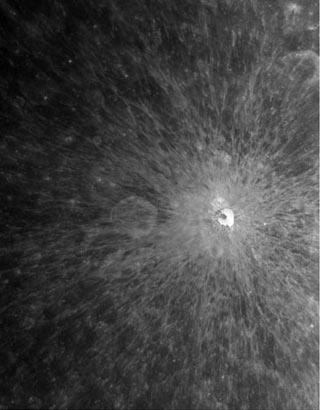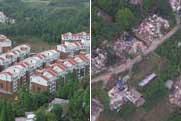China
Chang´e one captures moon´s dark side
WATCH VIDEO
Source: CCTV.com | 12-12-2007 08:44
Special Report: Chang'e I -Journey to the Moon |
A picuture of the dark side of the moon, taken by China's lunar orbiter Chang'e I, is released by the China National Space Administration on December 11, 2007. [cnsa.gov.cn]
The National Space Administration has unveiled two photos of the dark side of the moon. So far, only the US, the former Soviet Union and the European Space Agency have taken and disclosed similar pictures.
The CNSA says the orbiter is operating normally in terms of flying, probing, land control and communication, as well as data transmitting. The two photos of the lunar dark side sent back by Chang'e One are very clear.
Li Chunlai, Chief designer of Land Application System, Chang'e Project, said, "We can see from the photo, a typical crater on the dark side of the moon. It has a diameter of 52 kilometers and was generated by a meteor. There are many such kind of craters in this particular region."
Due to the positioning and rotation of the Earth and the Moon, mankind can only ever see one side of the Moon. The two photos will help scientists to have a better understanding of what was previously unknown.
The probing facilities on the lunar orbiter started to function over three weeks ago.
Liu Jianzhong, Deputy Chief designer of Land Application System, Chang'e Project, said, "So far, the eight probing facilities carried by Chang'e One are functioning well. The orbiter is continuing to send back data acquired through its surveys."
The microwave detector installed on the orbiter, is being used for the first time in lunar probing.
Zhang Xiaohui, designer of Microwave Detective, Chang'e Project, said, "The microwave detector is very sensitive to water, but there's no water on the Moon. During probing, the detector has been working pretty well and beyond our expectations. The data acquired by the microwave detector will definitely help in understanding the Moon."
Chang'e One's lunar probing will last for one year, during which the orbiter will continue to send back data. But scientists say they need at least another year...or even longer...to turn the data into real scientific achievement.
Editor:Zhang Ning



